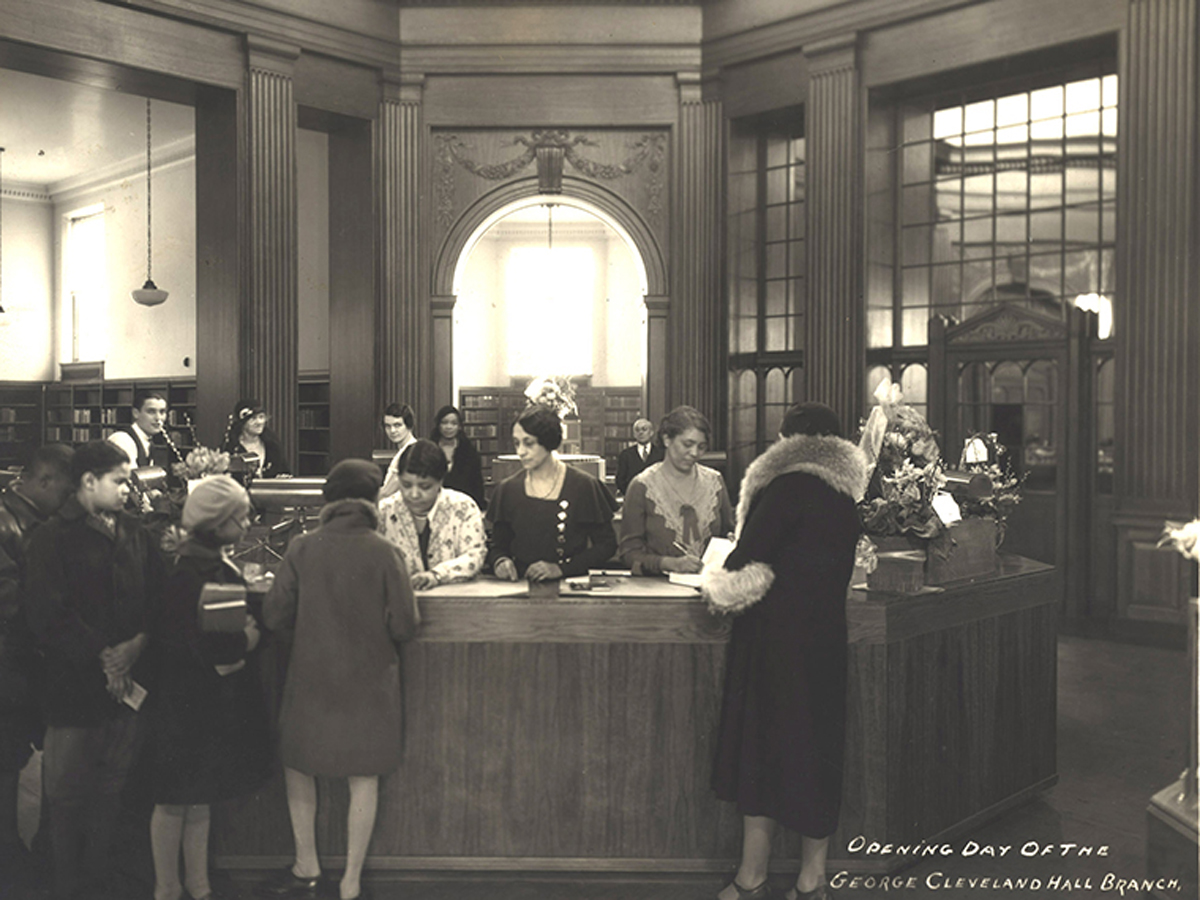One of the most extensive collections of Black history and literature in the United States can be found at a library in Chicago, but soon it will be accessible to everyone around the world.
Thanks to a $2 million grant from the Mellon Foundation, nearly 300,000 pieces from Chicago Public Library’s (CPL) Vivian G. Harsh Research Collection-the largest collection of African American history and literature in the Midwest-will be digitized. The collection includes the records of the Illinois Chapter of the Black Panther Party, the National Alliance of Black Feminists, the papers of communist and civil rights and labor leader Ishmael Flory, the Chicago SNCC History Project, a selection of Harold Washington’s political papers, manuscripts by Richard Wright, handwritten poems by Gwendolyn Brooks, and letters written by civil rights activist and educator Timuel Black.
The collection is named for Vivian Harsh, a pioneer in Black archiving and librarianship. As the first Black library director in Chicago, she lead the George Cleveland Hall Branch-the first CPL branch in a Black neighborhood, which opened in 1932 in Bronzeville. In this role, she raised funds for the library, assembled its collection, and managed a racially integrated staff of 15 library workers. Her commitment to building the collection established the Hall library as an eminent destination for Black writers and intellectuals.
Kit Ginzky penned a fascinating look at the collection and its steward for “South Side Weekly.”
“As construction of the Hall Branch was underway, Harsh received critical support from philanthropist and Sears executive Julius Rosenwald, whose foundation donated the land for the library. A grant from the Rosenwald Fund allowed Harsh to travel around the country purchasing books and visiting libraries that served Black communities, including the New York Public Library’s Schomburg Collection, which became a guiding light for the Special Negro Collection.
“Back in Bronzeville, Harsh drew upon her extensive social ties to secure donations of books, clippings, photographs, and ephemera. She especially relied on fellow members of the Association for the Study of Negro Life and History, a group founded by Carter G. Woodson to promote the preservation, study, and teaching of African American history as a way of fostering Black pride and contesting white supremacy. These early donations, including the bequest of 200 books from Dr. Charles Bentley, a prominent Bronzeville dentist and founding member of the Chicago chapter of the NAACP, marked an important transfer of Black cultural resources from private collections to the public trust.”
The Harsh Collection is currently housed at CPL’s Woodson Regional branch and can be viewed by appointment only, but digitization is already underway and scheduled to be completed in 2027. The project will be a boon to scholarship, according to CPL Commissioner Chris Brown.
“We have researchers from all over the world that visit Chicago to use this collection,” Brown told CBS2 Chicago. “We want to make it as accessible as possible.”
Digitization of the collection will also serve a greater purpose, according to journalist Hadeel Hashem.
“The digitization of the Vivian G. Harsh Research Collection is more than a mere technological upgrade; it represents a significant leap forward in making Black history accessible to a wider audience,” writes Hashem. “This move aligns perfectly with the ethos of Vivian G. Harsh herself, who dedicated her life to ensuring that the rich tapestry of African American culture and history was available to all. By embracing the digital age, the collection not only honors its namesake’s legacy but also opens new avenues for education, research, and inspiration. As the collection becomes available online, it invites a global audience to explore the profundity of Black history and the enduring spirit of those who preserve it.”
Learn more about the Vivian G. Harsh Research Collection at Chicago Public Library.
Photo: George Cleveland Hall Branch opening day, January, 1932, with Vivian Harsh at center. Source: Vivian G. Harsh Research Collection, George Cleveland Hall Branch Archives, Photo 084




